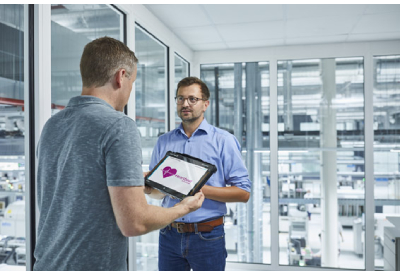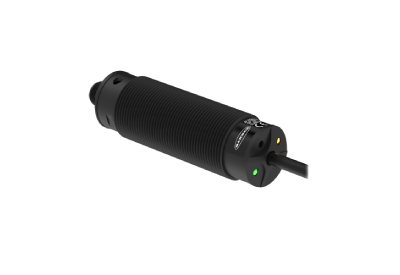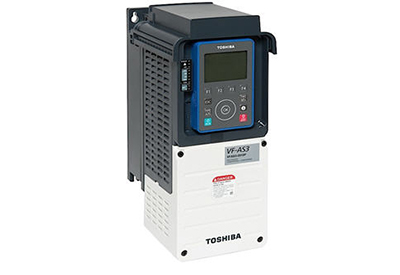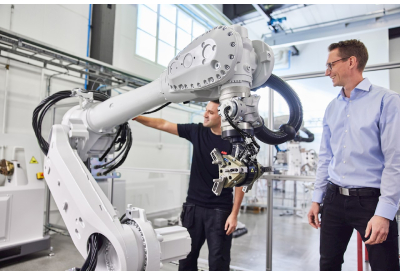Heartbeat Technology – Taking the Pulse of Your Measurement from Endress+Hauser

August 15, 2022
Endress+Hauser has incorporated its market leading Heartbeat Technology in many of its newest measurement and monitoring devices, like the Prosonic Flow W 400 , Proline 10 and Promag W 800 liquid flowmeters and t-mass F/I 300/500 thermal flowmeter.
Endress+Hauser’s Heartbeat Technology, featured in many of its measurement and analytical devices including new liquid and thermal flowmeters, includes unrivalled diagnostic, verification, and monitoring functions that provide reliable, in-depth device and process insights
Heartbeat is a critical set of tools professionals depend on to maintain high productivity, while at the same time keeping operating and maintenance costs low and assuring safety and regulatory compliance. By incorporating Heartbeat’s unrivalled functionality in new devices, Endress+Hauser is ensuring that these state-of-the-art products can deliver the full benefit of their advanced capabilities.
Heartbeat’s diagnostic and analytical tools are available today across the company’s product portfolio for flow, level, pressure, and temperature measurement as well as for liquid and gas analysis. Those tools perform diagnostics, verification, and monitoring, including permanent monitoring of the measuring device itself as well as deeper insights into the prevailing process conditions.
Heartbeat tools can inform users when something is wrong in a process and when action is needed to avoid shutdowns. It can help ensure operational safety and provides alerts when maintenance is required. The result is maximum plant performance and productivity. Unwanted anomalies are detectable early on so countermeasures can be initiated in a timely manner. All diagnostic information is categorized in a uniform and standardized manner according to NAMUR NE 107, i. e. Diagnostics active/Failure/Function check/Out of specification/Maintenance required. For each diagnostic event, a brief description and necessary countermeasures are displayed.
Heartbeat Verification functions deliver benefits like enhanced measuring reliability and safety, and higher operating efficiency. A measuring device’s functionality can be evaluated at any time at the push of a button – in situ and without any need for external tooling or process interruption. Heartbeat Verification not only checks if the device components still comply with their original reference values, but also indicates the presence of any specific systematic faults that could have a negative impact on the device or process performance, e. g., corrosion, abrasion, or build-up.
The Heartbeat Monitoring tools provide deeper insights into process and device conditions. Device measurement is expected to be stable over time if it is operated within its intended range of use. However, for particularly challenging conditions some impacts, like corrosion or abrasion of the sensor’s wetted parts, or the occurrence of foam in a tank or build-up on the sensor’s surface could influence the performance and reliability of a device. Heartbeat Monitoring detects these influences and converts them into easily understandable information for operators.
By observing Heartbeat Monitoring parameters over time, plant operators can reliably and promptly detect the presence of undesirable changes in the device and/or process condition. This makes it possible to optimize operations and predict maintenance needs. This also allows measures to be taken in a timely manner to avoid any potentially unsafe process conditions or device malfunction. Heartbeat Monitoring supports plant operators in optimizing their processes and operational safety, as well as predicting upcoming maintenance needs and minimizing unplanned shutdowns.
Although most Heartbeat tools can be accessed on site, via direct device operation, the potential for value creation increases significantly when the devices are operated via field tooling, connected to the process control/asset management systems or even to the cloud. Tasks are not only performed more efficiently and conveniently in a connected environment, which makes additional functionality available, e. g., generation of a verification report or monitoring of Heartbeat Technology parameters. With Endress+Hauser’s Netilion cloud platform, for example, it is possible to access Heartbeat Diagnostics “remotely” and see device-specific documentation on the digital asset twin. In this way, plant operators can exploit the full saving and efficiency potential of digitalization and IIoT.








